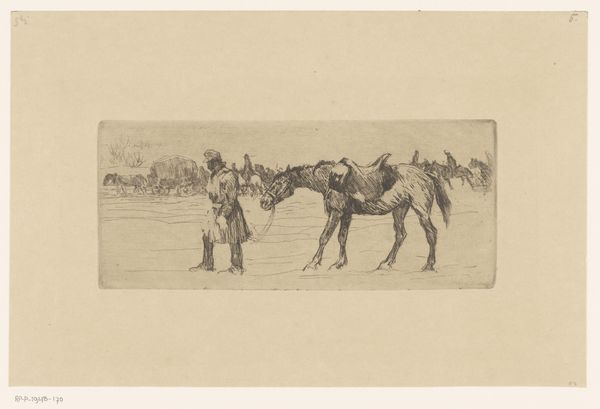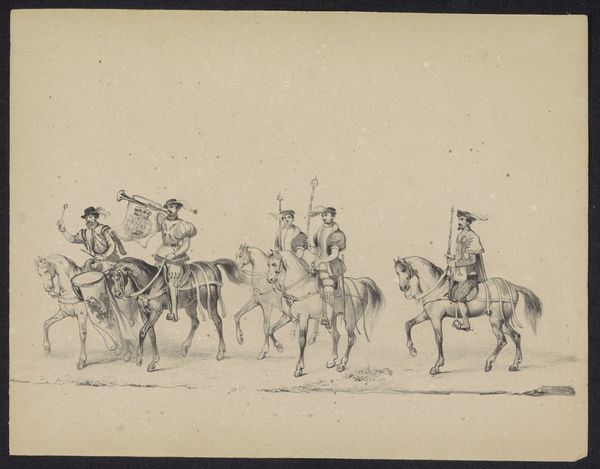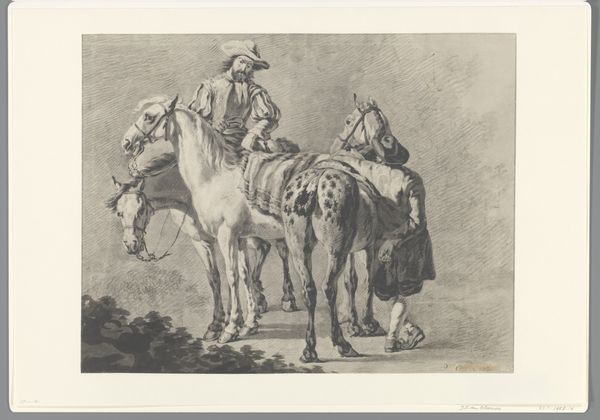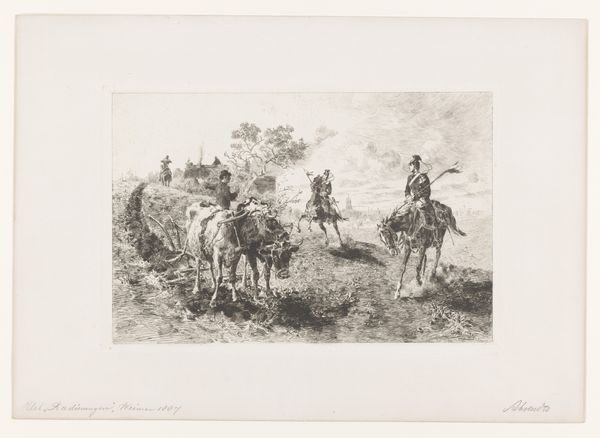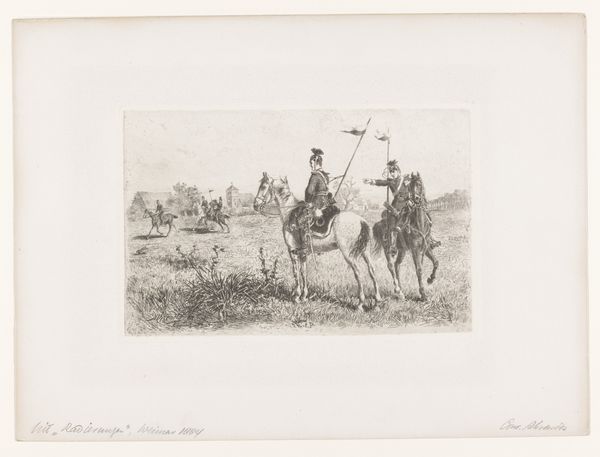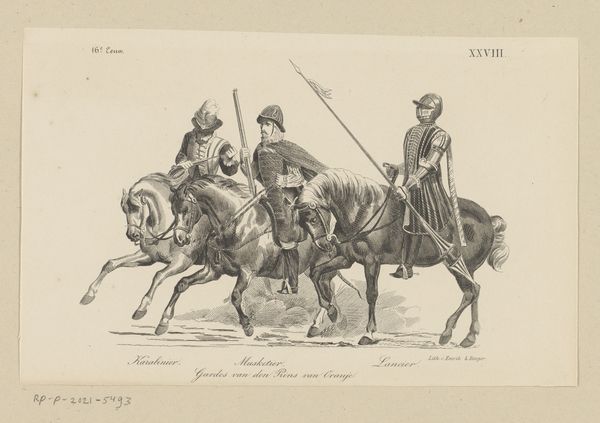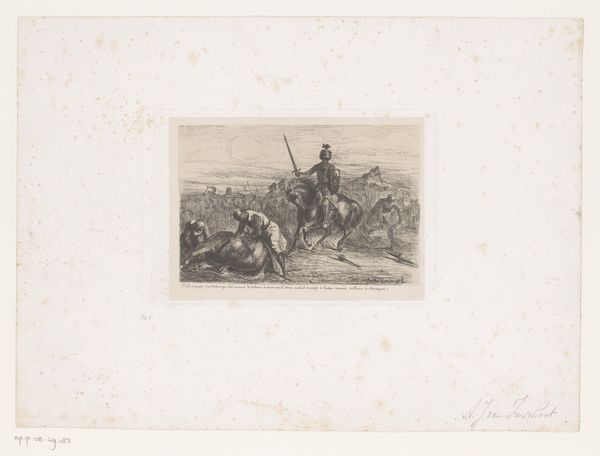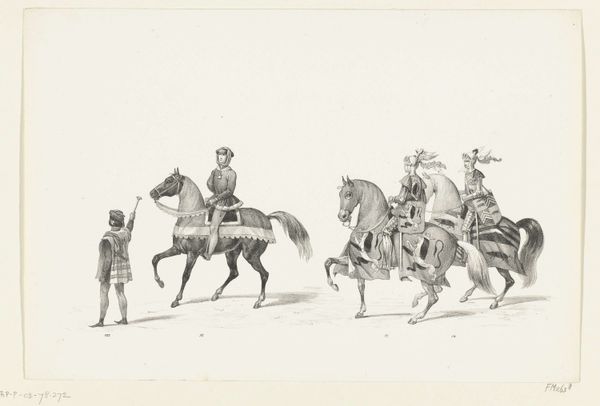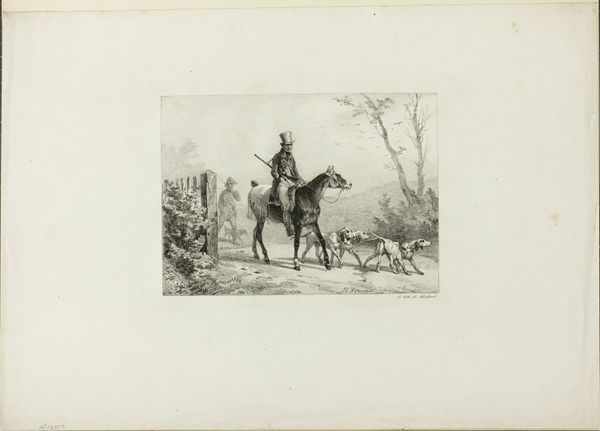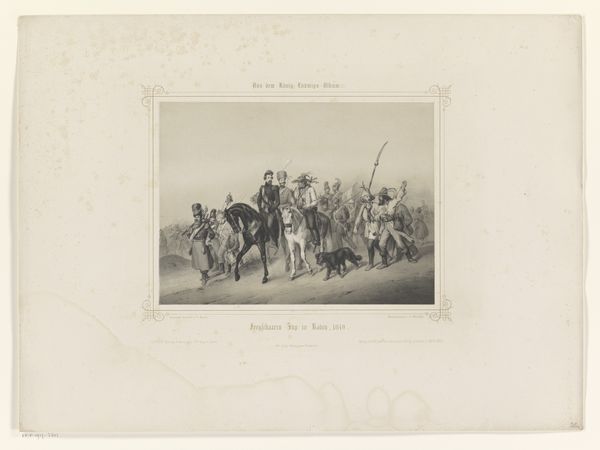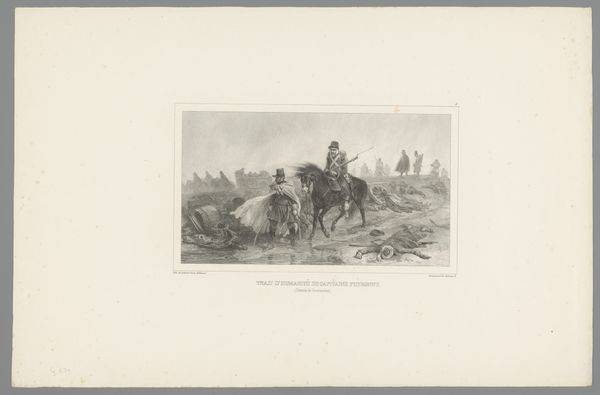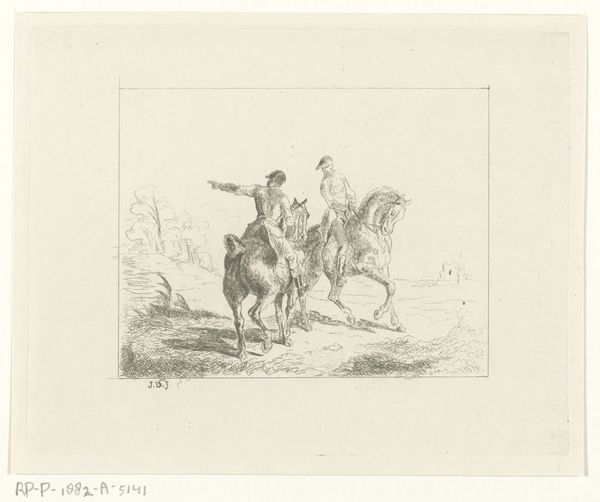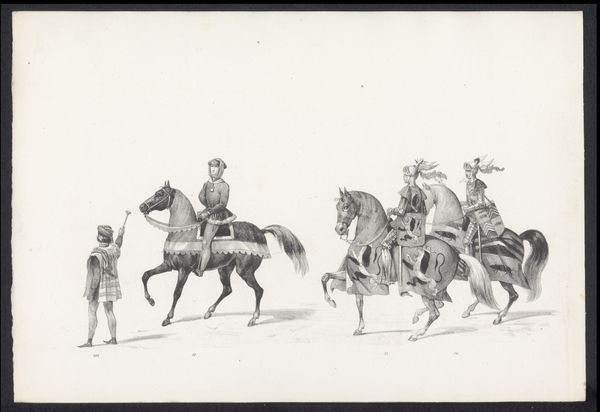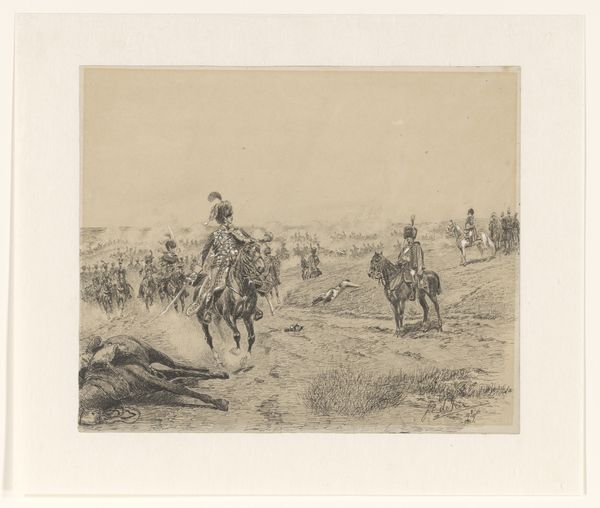
Dimensions: height 201 mm, width 280 mm
Copyright: Rijks Museum: Open Domain
Curator: My first thought? An overcast morning and the steely determination of men heading toward… something. Editor: Indeed, there’s a stillness and resolve captured here in “Vier soldaten te paard,” or “Four Soldiers on Horseback,” created in 1881 by Edouard Armand-Dumaresq. Executed with pencil on paper, it almost vibrates with restrained energy. The work draws from realism and romanticism, reflecting its time. Curator: Restrained is the word. See the delicate lines, almost whispering across the paper? But beneath, I sense… dread. A weight that the soldiers themselves are surely carrying. Editor: It resonates with the post-Franco-Prussian War period. Consider how this era sought to both romanticize and realistically portray military life. Dumaresq, deeply engaged with military subjects, is carefully building a narrative here. How do you interpret that? Curator: A stoic genre scene, absolutely. The horses mirroring the men: contained, but pawing at the ground. What strikes me is the vulnerability amid all the bravado. Look at the sensitive rendering of each soldier’s face – there's uncertainty there too. It makes you consider war, beyond its supposed glories, as a shared human experience tinged with unease. Editor: The way he uses line, too, creates such varied texture. The soldiers' coats almost seem to bristle with individual threads, despite the limited palette. But does this technical skill actually work to perhaps, sanitize, or normalize what is intrinsically a system of violence? Are we asked to admire technique, while ignoring context? Curator: That’s the tension, isn't it? The aesthetic allure drawing us in, but the content whispering, "Look closer. What are you *really* seeing?" And as viewers, shouldn’t we be compelled to question whose stories and which facets of experience get highlighted in art? It feels essential. Editor: Absolutely. Recognizing those contradictions makes the viewing experience, potentially, richer. Curator: So, an image both quietly beautiful and deeply unsettling, challenging us to feel and to think, all at once. Editor: Precisely. Art historical pieces aren't relics, but mirrors. And in them, we can see more than we often bargain for.
Comments
No comments
Be the first to comment and join the conversation on the ultimate creative platform.
